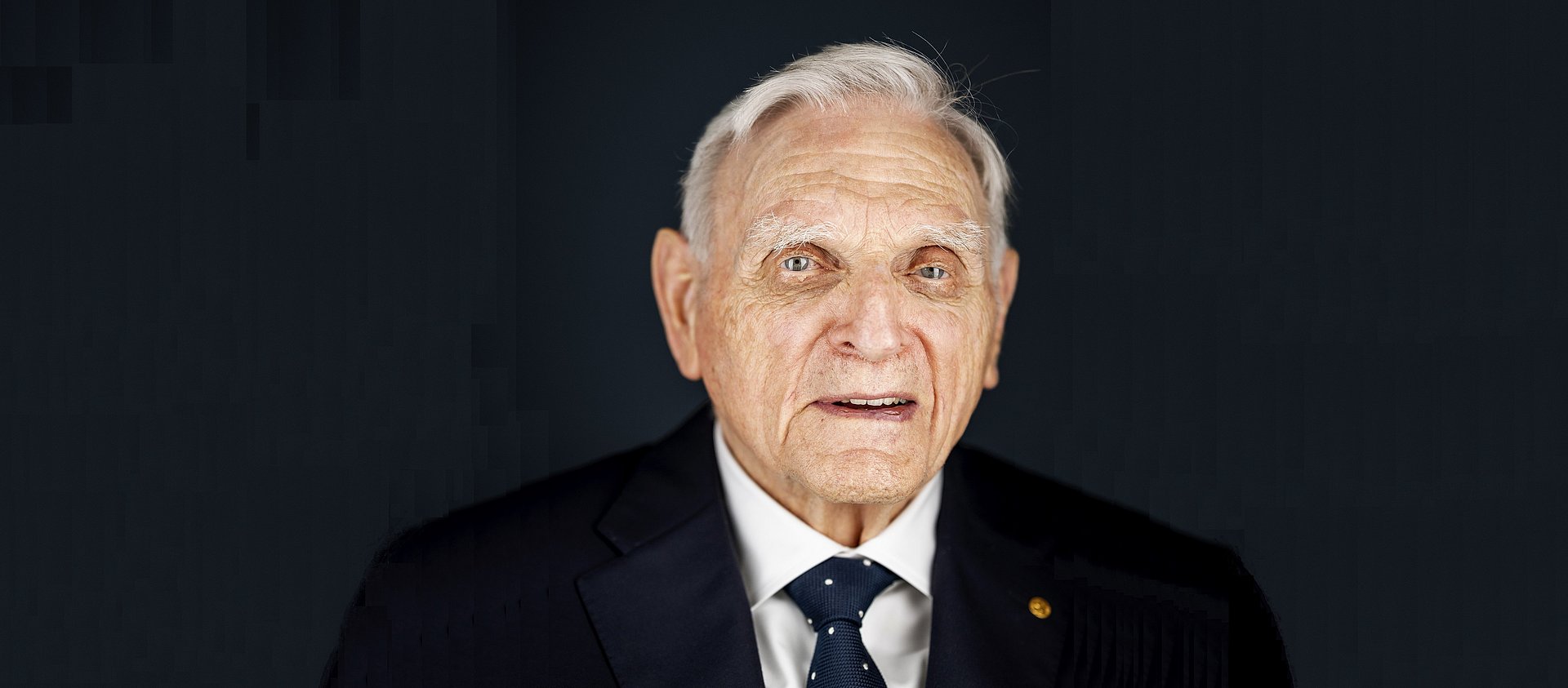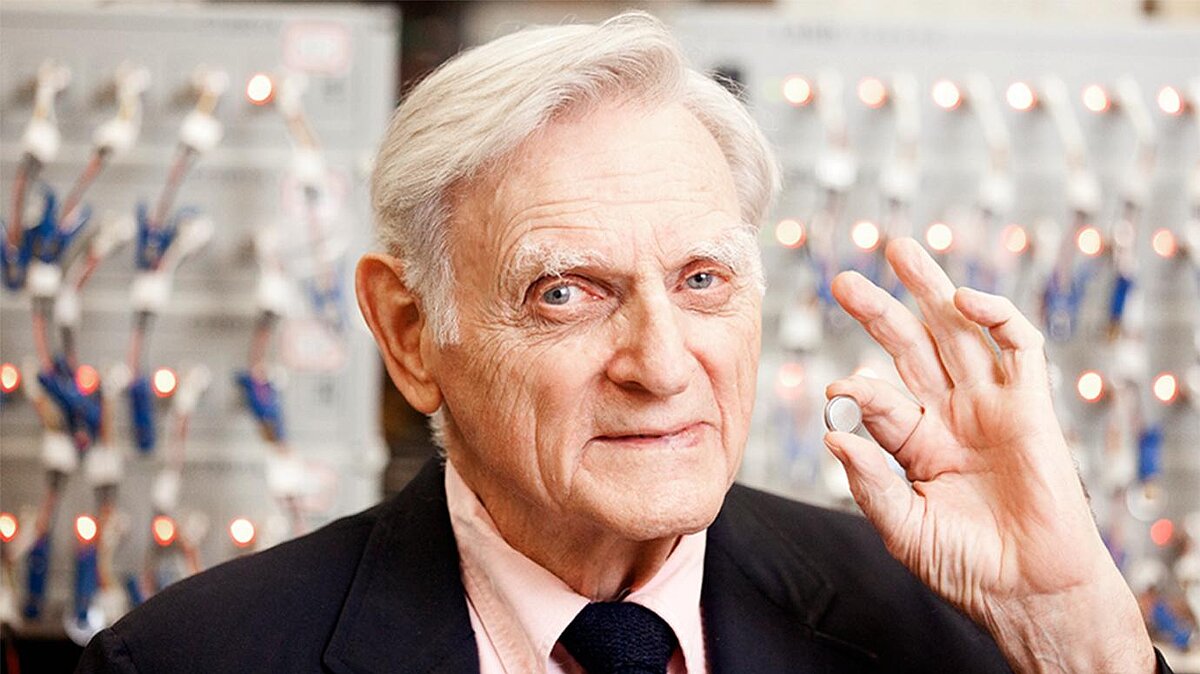It is not often that the scientists behind significant developments are as much in the spotlight as their inventions. However, it is even rarer that one of these scientists has a connection to our immediate area and is significantly involved in one of the topics that have gained great importance for IBU-tec: John Bannister Goodenough has made decisive contributions to the development of lithium-ion batteries, is a Nobel Prize winner, will be 100 years old on July 25 and was born in Jena!
"I like to think that part of my heritage is to have contributed to the marriage of physics and chemistry: Not alone, of course. We are inevitably and inexorably moving toward interdisciplinarity between materials physics and materials chemistry."
– John B. Goodenough
Nobel Prize at an Advanced Age
"How the inventors of the lithium-ion battery changed the world" – that's how the 2019 Nobel Prize in Chemistry was awarded to John B. Goodenough, Michael Whittingham and Akira Yoshino – reflecting the gradual, systematic development of battery technology.
This year, one of them has a special occasion to celebrate. Goodenough reaches his 100th birthday on July 25! At 97, he was the oldest person ever to receive a Nobel Prize and he is the oldest living holder.
Childhood in Europe and the USA
His connection to Thuringia and Jena goes back a long way. In the 1920s, his father did research at the University of Oxford and enjoyed long summer vacations in the Weimar Republic. It was during one of these that John Bannister Goodenough was born in Jena. He grew up, however, in comfortable circumstances in Oxford and later in the United States after the family returned with their three children in 1928. Goodenough experienced a freer and more nature-loving childhood than can be imagined 100 years later – unsupervised exploration of the meadows and woods together with his dog Mack. At the time, his father was teaching at Yale University, where John would later earn his bachelor's degree in mathematics – summa cum laude.
Goodenough – Career in Troubled Times
He graduated in time to serve as a meteorologist in World War II beginning in 1943, including some interesting involvement in events that would become world history. After the war ended, he felt a calling back to science. One of his old instructors enabled him to go to the University of Chicago to study physics, for Goodenough believed that science would be of elemental importance to the 20th century – and that physics was one of the fundamental foundations of all sciences. However, when he signed up for his first classes, one professor remarked, "I don't understand you veterans. Don't you know that everybody who has done anything significant in physics had done it by the time they were your age?" But Goodenough had a real flair for physics.
After earning his doctorate in 1952, he went to MIT's Lincoln Laboratory, where he joined the work on a memory system for the first computerized air defense system – SAGE. Goodenough became a key figure in the development of the first random access memory (RAM), indispensable in all computers today.
Goodenough's Research on Lithium-Ion Batteries
The USA, however, was not to become the location of the work for which he is remembered today: At the age of 53, like his father before him, he left the U.S. for England to teach and conduct research as a professor and head of the Laboratory of Inorganic Chemistry at the University of Oxford from 1976.
Here Goodenough turned his attention to the emerging field of battery chemistry. Using the basic battery design invented by Whittingham, he developed a new cathode that greatly stabilized the structure and improved capacity. Combined with an anode developed by Yoshino, the result was a powerful, safe battery that could be recharged hundreds of times.
During this time, Goodenough led a multidisciplinary group that sought to combine the intuition of physics with the meticulousness of chemistry and the pragmatism of engineers. Together, they began to explore other materials to continually improve the capacity and safety of batteries. To do this, they explored cathodes with a spinel crystal structure. In normal cobalt cathodes, the atoms are arranged in layers, so the lithium ions stored in them can only move along these layers. In a spinel, this movement can occur in three dimensions, creating more paths for ions to find their way into the electrode – speeding up charging and discharging.
A year later, in 1982, Goodenough's lab developed a breakthrough manganese spinel cathode that was even cheaper and safer than his original cobalt oxide. But Goodenough figured there had to be something even better! He systematically evaluated various transition metals: Cobalt, Manganese, Vanadium, ... Finally, a combination of iron and phosphorus produced a promising olivine structure: lithium iron phosphate. The lithium is extracted and redeposited when potentials occur – a sensational result for Goodenough.
For the third time now, Goodenough's lab had produced a pioneering lithium-ion cathode with commercial capabilities - with cobalt oxide, with manganese spinel and now with iron phosphate.
Today, Goodenough's variations on the cathode design are ubiquitous: batteries with a lithium manganese oxide cathode are used in many electric cars. Its lithium iron phosphate cathode is found in many modern power tools or stationary energy storage devices and electric vehicles.
"I've learned to be open to surprises," Goodenough once told University of Chicago Magazine, and "not to have preconceived notions or be closed to what might work."
Title picture: © Nobel Media. Photo: A. Mahmoud
Bottom picture: Photo courtesy of The University of Texas at Austin


